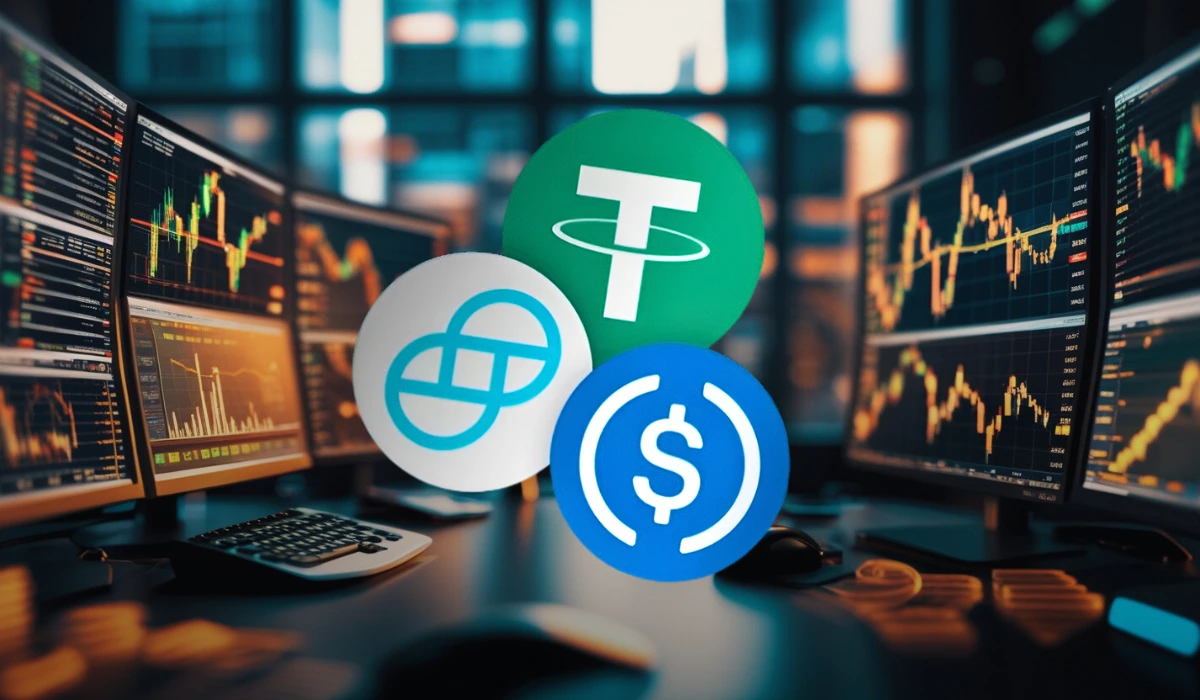Stablecoin is a cryptocurrency, which has a value that is pegged with another currency or commodity. These types of cryptocurrencies are more useful than conventional cryptocurrencies. Usually, stablecoins are pegged with fiat currencies like the US dollar, and prices of commodities like gold are also pegged with stablecoins.
Stablecoin has gained an impactful momentum in recent years, it is becoming popular because of its enhanced global use cases. However, we cannot eliminate the possibilities of its vulnerabilities and potential risks. The general vulnerabilities of Stablecoin include depegging, liquidity concerns, operational risks, etc. In this article, we discuss the vulnerabilities of stablecoins and how they affect the market and create market chaos.
What are Stablecoins?

Stablecoins are a type of cryptocurrency that obtains its market value from external sources like fiat currency, commodities, and financial instruments. They are created to become an optional alternative to traditional volatile cryptocurrencies and are generally pegged to assets like fiat currency, commodities, and other cryptocurrencies. Stablecoins mainly use different mechanisms to balance their value. Collateralization or algorithmic adjustments are the most commonly used mechanisms in the stablecoin arena.
These types of cryptocurrencies can be used to make payments including cross-border payments. Other use cases of stablecoins include, they can be used to buy or sell other cryptocurrencies, and they can bridge the gap between traditional finance systems and digital finance. Stablecoins are minted on blockchain networks. Possessing stablecoins also has potential risks, sometimes, stablecoins issuers might not have sufficient reserves to back a stable value. Let us evaluate the potential vulnerabilities of stablecoin in the next section.
Vulnerabilities of Stablecoins
The concept of ‘stablecoin vulnerability’ indicates potential risks or fragility within a stablecoin’s architecture or operation. These vulnerabilities can cause significant impacts, such as deviating from the pegged asset or market instability. Several factors might contribute to these vulnerabilities, such as insufficient reserves, technical issues within the smart contract algorithms, or crypto market manipulation.
- Reserve Management: reserve management is one of the major vulnerabilities of stablecoins. The lack of proper management of reserved assets can lead to multiple issues like depegging and solvency. If the asset backing stablecoin is not fully disclosed or lacks transparency, that could be a major challenge for stablecoins.
- Depegging: depegging refers to the deviation of stablecoin’s value from the fiat currency or asset which is pegged to. Depegging will significantly impact the market and potentially lead to financial losses. This is generally caused by panic selling or a lack of trust and confidence in the issuer’s reserves.
- Liquidity concerns: stablecoins cannot be quickly converted back to fiat currencies due to platform-based liquidity issues and limited market depth.
- Cybersecurity threats: it is a common vulnerability of every digital asset. Vulnerability and exposure to hacking attempts toward smart contracts that manage stablecoin operations could lead to large-scale financial losses.
- Algorithmic issues: Algorithmic stablecoins are common in the stablecoin arena. These kinds of coins rely on complex mechanisms to balance their peg. Any issues and design flaws might lead to the devaluation of the particular stablecoin.
- Centralization concerns: Some stablecoins are issued and managed by centralized entities, so this could raise concerns about possible market manipulation and transparency issues in reserve management.
- Regulatory uncertainty: Lack of proper regulations of stablecoins could lead to issues related to legal compliances.
These are the major vulnerabilities of stablecoin that could affect the financial balance of coin holders and market conditions at the same time. Coin holders must be aware of the potential risks and vulnerabilities of stablecoins. If they can address the risks properly and manage them effectively, they can lead an enhanced cryptocurrency journey.
How Stablecoin Vulnerabilities Can Cause Market Chaos?
The impact of stablecoin vulnerability can be explained with the example of TerraUSD (USDT) and its sister token named Terra. Terra was a blockchain network consisting of a stablecoin called TerraUSD. In May 2022, the price of Luna collapsed from $120 a coin to zero, which led to the obliteration of $50 billion in market capitalization of UST/LUNA. This incident reportedly led to a $400 billion loss in the cryptocurrency markets. The reason for the abrupt price drop of Luna is not clear yet, but the impact it had on the cryptocurrency markets cannot be neglected.
The impact of stablecoins on causing market chaos is clear from the example of Luna, so any kind of issue regarding stablecoins will have a huge impact on crypto markets. Vulnerabilities of Stablecoins will eventually lead to a possible price drop and loss of credibility towards the project. These issues can seriously impact the value and significance of stablecoins. So, the vulnerabilities of stablecoins should be addressed by the developers of the project and concerned authorities. Ensuring the stablecoin is safe and secure will seriously impact the user experience and help to balance the crypto market.
The Bottom Line
Vulnerabilities are major issues in the world of cryptocurrency. In the cryptocurrency arena, even a small vulnerability or issue can create a big impact. The potential issues can impact the totality of the market, addressing the issues and finding out the methods to prevent it are the sole solutions to this problem.
Implementing robust regulatory monitoring, conducting regular security audits, developing decentralized governance architecture, and promoting the development and operations of the stablecoins are effective methods to address and solve the vulnerability issues of stablecoins. The project developers and concerned authority personnel should evaluate the functioning of the stablecoins on a regular basis.






